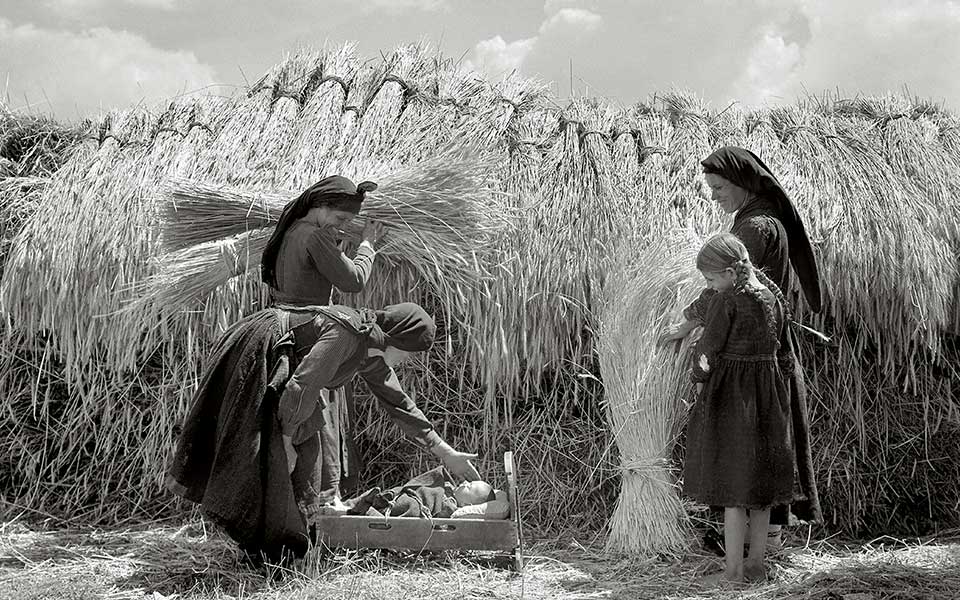Iconic images from Greek photographer Elli Sougioultzoglou-Seraidari, better known as Nelly’s, drew international attention during the country’s tumultuous interwar years, inspiring fascination and sometimes stirring controversy.
Better known by her pseudonym Nelly’s, Elli Sougioultzoglou-Seraidari was a refugee from Asia Minor and a pioneering dance photographer who also captured different aspects of Greece. Though her work once graced the cover of magazines around the world, she’s no longer widely recognized internationally.
Now, Nelly’s is the subject of a retrospective exhibition organized by the Benaki Museum, aiming to reintroduce the artist to the public 25 years after her death. Her life covered nearly the entire 20th century – she died in 1998 at age 98 – and was marked by adventure, glamour and an ability to reinvent herself amid adversity.
“Nelly’s” – the exhibition – presents her work in sections focused on the three cities where she spent most of her life and which shaped her vision: Dresden, Athens and New York.
Almost 350 images have been selected from her huge personal archive, which she donated to the Benaki Museum in 1984. They introduce the viewer to the styles she adopted over the course of her 45-year career, and to the numerous black-and-white and color photography techniques she experimented with over the decades. These original images are complemented by roughly 150 digital prints made from her negatives, filling in any narrative gaps. Curated by Aliki Tsirgialou – chief curator of the Benaki Museum photographic archive – the exhibition is the result of years of studying and archiving the photographer’s work.
With bold viewpoints, these images helped form the basis for the development of post-war Greek photography, while also igniting debate over her representations of the classical Greek form.
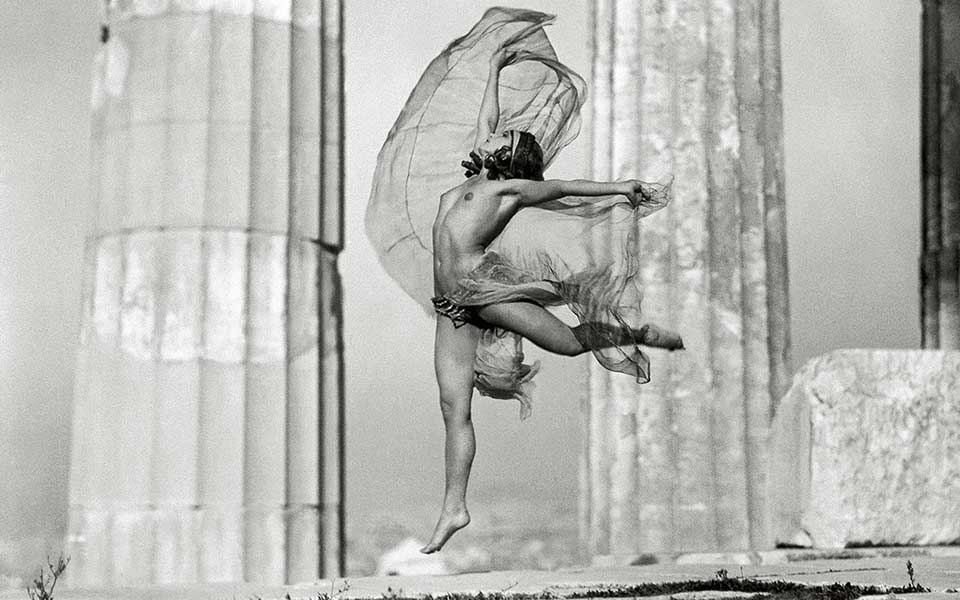
© Nelly’s/Benaki Museum Photographic Archives
Uprooted
Born in 1899 in Aidini, in Asia Minor, Nelly’s studied at the city’s French school before attending the Homerian Girls’ School of Smyrna. During the summer of 1919, she experienced firsthand the tragic events of what has become known as the Aidini Massacre; her family was uprooted from her birthplace, fleeing to Smyrna at the beginning of the Greco-Turkish War.
At 20, she left with her brother for Dresden, to study painting and music. To pay her bills, Nelly’s turned to photography, studying with distinguished practitioners in that city. It was during this time that she met her future husband, the pianist Angelos Seraidaris.
Although she was abroad when the Greek communities of Asia Minor were expelled by Turkish military forces in 1922, Nelly’s was, like so very many other people, devastated by the events that transpired on the eastern coast of the Aegean; she, too, is counted among the hundreds of thousands of refugees who, leaving their homeland for a new start, helped revitalize Greece with their cultural traditions, their skills and their creativity.
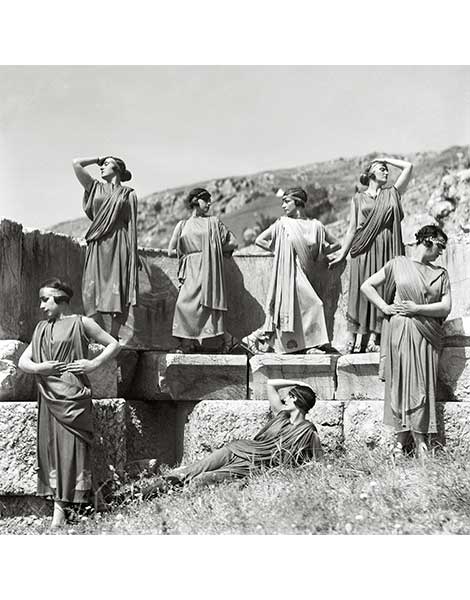
© Nelly’s/Benaki Museum Photographic Archives
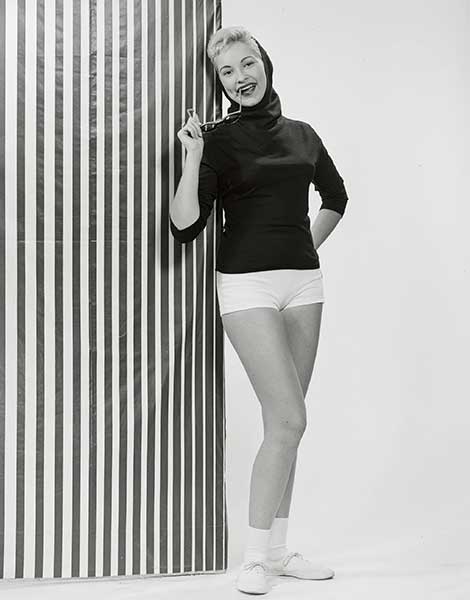
© Nelly’s/Benaki Museum Photographic Archives
Nelly’s moved to Athens in the spring of 1924 – her family had by then lost its fortune – and opened a photography studio on Ermou Street. It was a bold decision to set up shop in the high-rent city center, working as an unknown photographer competing in a male-dominated industry. All she had been able to bring from Dresden was her photographic equipment, the knowledge she gained as a student, her passion, and her work ethic. Nelly’s specialized in portraits as well as dance and nude photography. Wealthy Athenians soon flocked to her studio, including some of the most notable Greeks of the period. The poet Kostis Palamas was among her subjects, as was famed statesman Eleftherios Venizelos and other politicians, along with various beauties of the day, theater actresses, well-heeled Athenian ladies in their wedding dresses, and members of the royal court.
Among her most famous early images are the ones she took in October 1925, of a nude Mona Paeva, prima ballerina of Opéra Comique, at the Parthenon. A few days later the photos were published, causing a stir in the conservative Greek society. Undaunted by that controversy, she captured a similar scene in 1930, this time of Russian dancer Elizaveta Nikolska in mid-air, her transparent apparel floating in front of the Parthenon’s columns. The composition remains one of the most beautiful dance images of all time and is today internationally associated with the photographer.
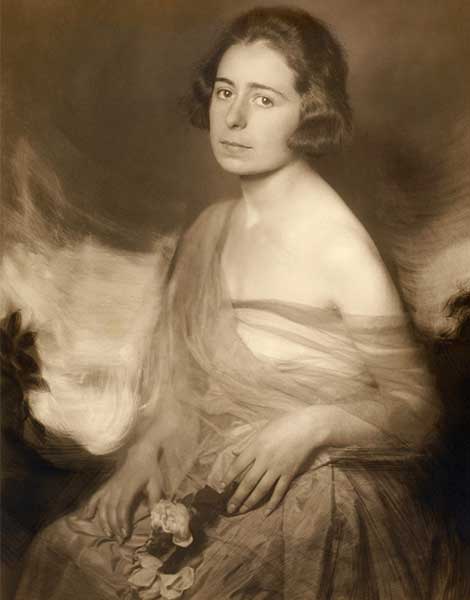
© Nelly’s/Benaki Museum Photographic Archives
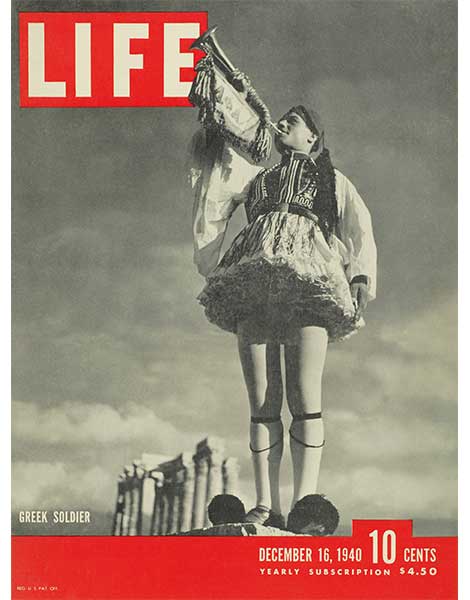
© Nelly’s/Benaki Museum Photographic Archives
Nelly’s captured the spirit of Hellenism as it was expressed at the time; she sought to connect the country’s present with its glorious past. She found inspiration from watching the Delphic Festivals of 1927 and 1930, organized by the poet Angelos Sikelianos and his wife, dancer Eva Palmer. She photographed members of the Chorus of Oceanids at the archaeological site of Delphi and captured images of nude athletes in the ancient stadium of Delphi, their poses reminiscent of ancient Greek sculptures.
She also photographed her tours through the Peloponnese and Crete, and began traveling to Santorini. In 1929, the Greek National Tourism Organisation (GNTO) released the first poster featuring one of her images.
She was particularly interested in capturing the Greek countryside and its people. From the early 1930s onward and in collaboration with the GNTO, she revisited this subject, immortalizing the beauty of the land and the charm of the people she encountered. Between 1935 and 1939, Nelly’s worked on commissions for Greece’s Ministry for Press and Tourism. She traveled to Epirus and Crete, accompanied, as she noted in her book “Self Portrait,” by the editors of the Greek foreign language magazine, En Grèce. The magazine, which was published in English, French and German, aimed to attract visitors to Greece. It promoted Greece’s natural wonders, traditional settlements and local inhabitants and laid the foundations for the country’s international image during the interwar period.
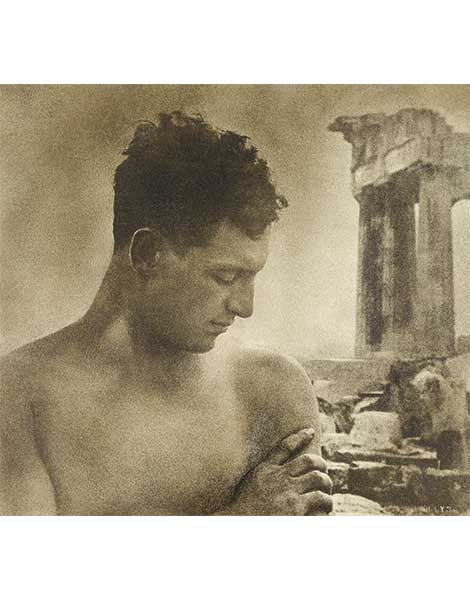
© Nelly’s/Benaki Museum Photographic Archives
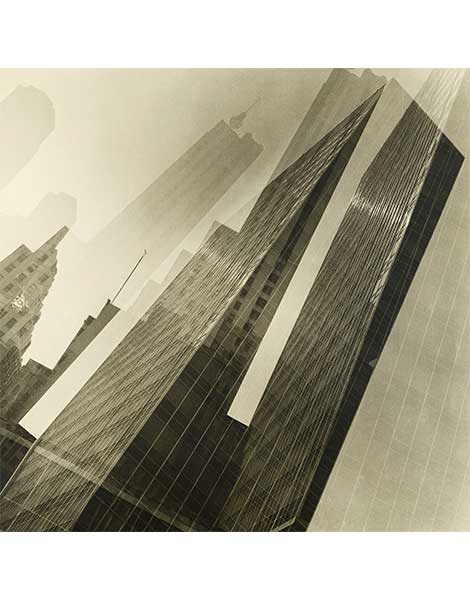
© Nelly’s/Benaki Museum Photographic Archives
For the 1939 New York World’s Fair, Nelly’s traveled with her husband to the United States, entering on a 23-day residence permit. At the fair’s Greek pavilion, designed by students of the great architects Dimitris Pikionis and Alexandra Moreti, Nelly’s created some of the decorations with artist Gerasimos Steris. Nelly’s also contributed five photographs from her black-and-white collage series called “Parallelisms,” and earned a prize for her composition of Santorini; she used the prize money to purchase new photographic equipment. Other noted Greek artists who participated included Konstantinos Parthenis, Nikos Engonopoulos, George Zongolopoulos and photographer Voula Papaioannou.
After the World’s Fair ended, Nelly’s remained in the country, with the support of the Greek expatriate community, and organized a series of presentations and lectures. She created a photo book of her best landscapes at her own expense, and presented it to Eleanor Roosevelt, wife of US President Franklin D. Roosevelt. In December of 1940, her photograph of an Evzone bugler in front of Athens’ Temple of Olympian Zeus was published on the cover of Life magazine. It was another example of an image that turned the international spotlight on Greece. The magazine cover, coupled with the Greek army’s victories in the Albanian highlands during Italy’s failed offensive, led to a rise in international support for Greece.
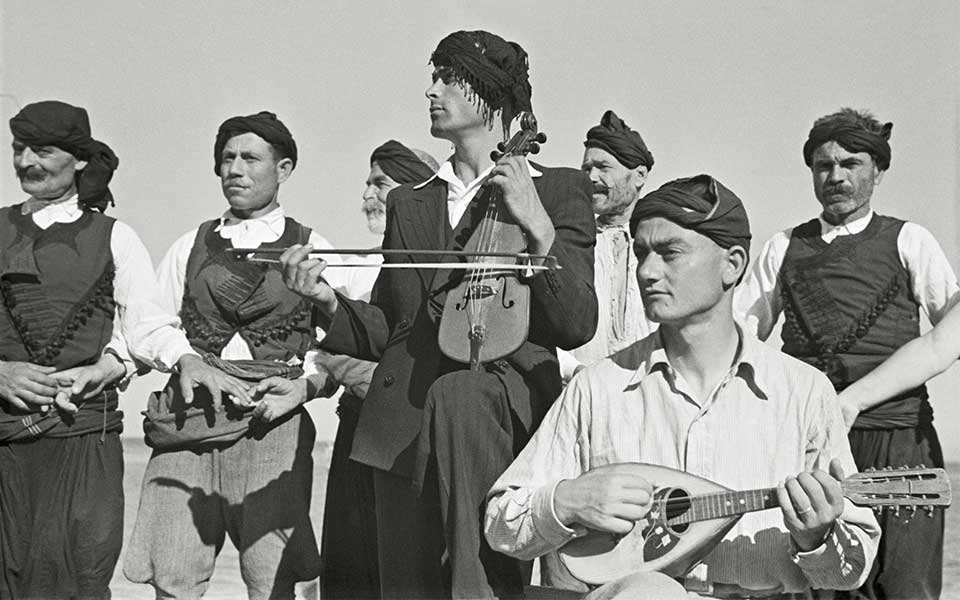
© Nelly’s/Benaki Museum Photographic Archives
The American years
For the World’s Fair, Nelly’s had left her brother in charge of her studio on 18 Ermou Street in Athens. With the onset of WWII, she decided to extend her stay in the US, and ended up living there for nearly 30 years. When she later spoke about her life in America, Nelly’s usually focused on her positive experiences and many successes. She did encounter the harsher realities of life as an artist in New York as well, including financial difficulties and fierce competition from her peers, but the ethnic Greek community, led by Greek shipowners who were experiencing great financial success at the time, did not desert her.
She opened a photo studio in New York similar to the one in Athens, and once again important Greeks of the day posed for her. The list included the actress Katina Paxinou, art collector and gallerist Alexandros Iolas – at the time unknown in Greece – and the pioneering physician Georgios Papanikolaou. Aristotle Onassis also paid a visit. To decorate the communal spaces of his new tanker “Olympic Torch,” the shipping magnate ordered enormous enlargements of Greek landscape photographs Nelly’s had taken. The two Greeks, both from Asia Minor, became friends, and photos over the years show them conversing in various social settings.
During her 27 years away from Greece, the ever-restless Nelly’s learned about new trends in photography, and dabbled in color images and in advertising. But when she returned to Greece in 1966, she chose not to pursue her career. The public no longer remembered her but, as Nelly’s recounted in her book, “I didn’t give any signs of life, either.” The estrangement lasted until November 1975, when journalist Maria Karavia met the photographer and wrote a series of articles on her life and work for the newspaper Kathimerini. From those stories, the artist and her once-celebrated images were rediscovered. Greek society embraced her anew, and the state officially honored her contribution to the country’s art scene. The renewed attention on her also sparked interest in the history of Greek photography –understandable, considering just how far back her body of work reached.
The Benaki Museum’s new exhibition brings her into focus yet again, nearly half a century after Karavia’s articles were published and just in time to help celebrate the 50th anniversary of the museum’s photographic archive department.

